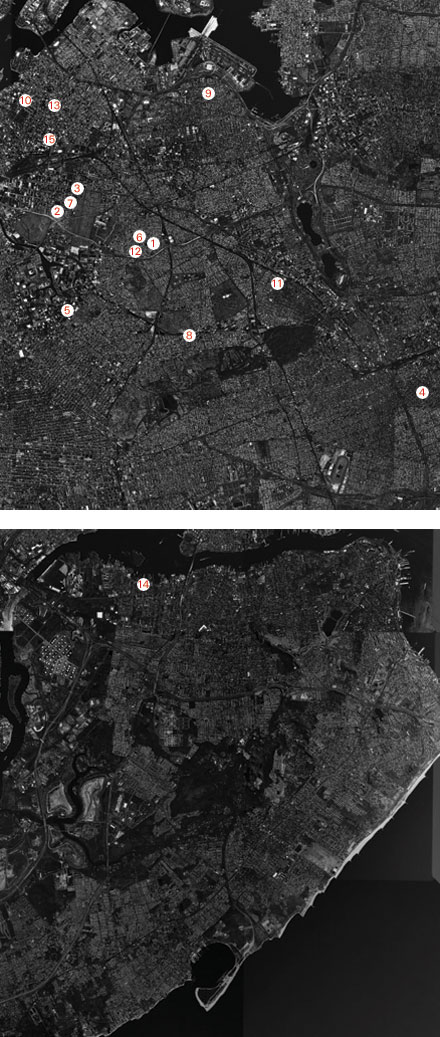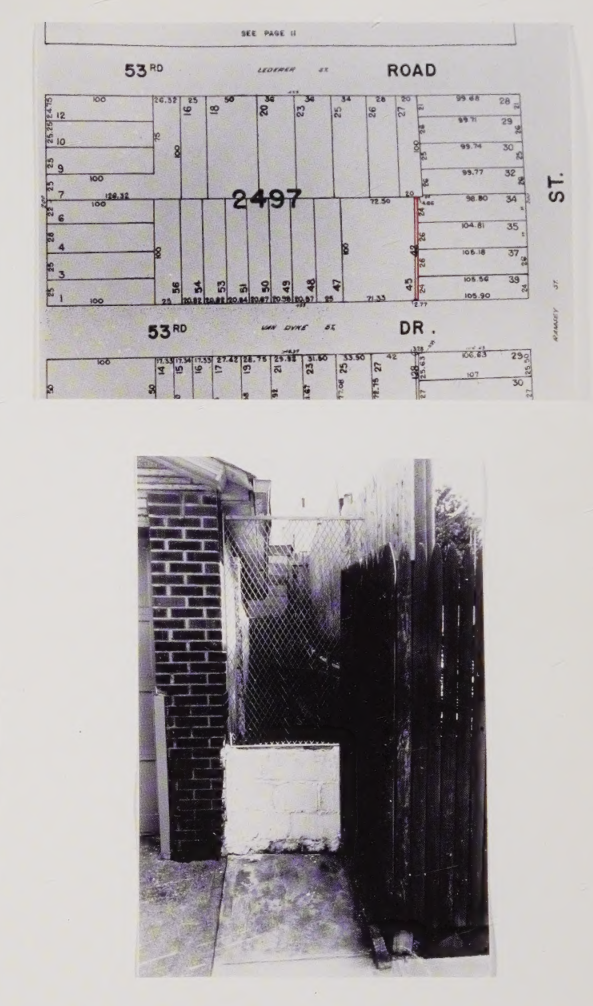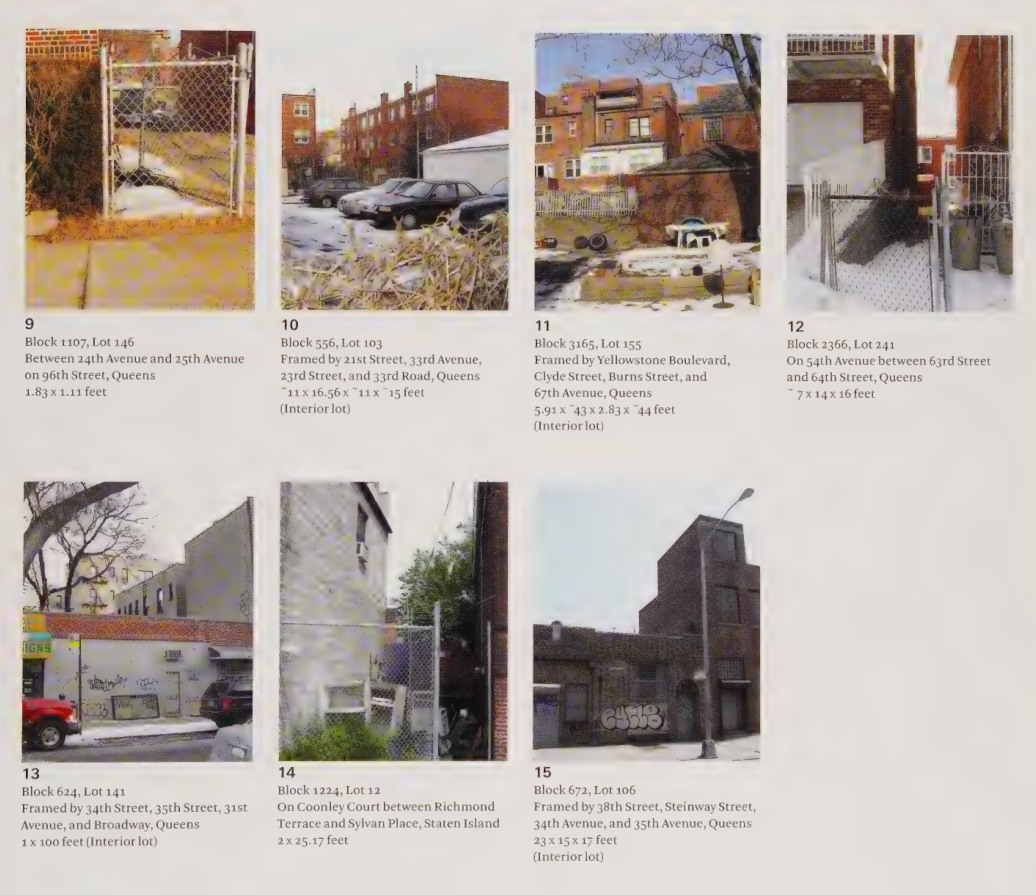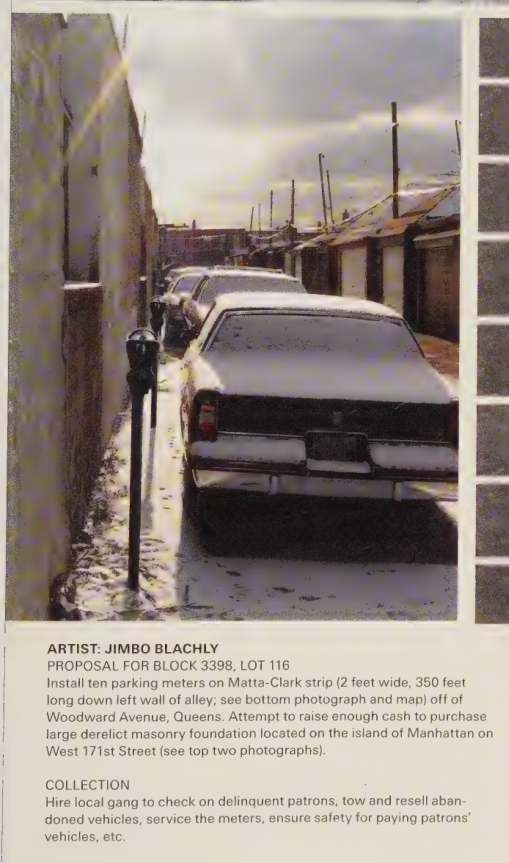created 2025-05-04, & modified, =this.modified
rel: Gordon Matta-Clark Ruins and Fragments by Robert Harbison Terrain Vague
Why I’m reading
Going through Gordon Matta-Clark works. He died at but 35 from Pancreatic cancer.
The Odd Lots concept is cool, purchasing: Liminal lots, Lost lots, Disconnected Lots.
They were not functional and given function. This book seems to relate to an exhibition.
Look at them:
Highland Titles
Thought
I’m reminded of those services of Highland Titles where you can “Become Lord or Lady of the Glen – Claim your Land and Rightful Title”.
The site itself has these footnotes:
You will be addressed by your choice of Laird, Lord or Lady of the Glen by us and within our 300,000+ strong community. Please note you cannot buy a noble title. This is for enjoyment purposes only.
You obtain a personal right to a souvenir plot of land. Highland Titles remains as the registered landowner and manages the land on your behalf.
The store has a shop where you can purchase deed polls:
A deed poll is a legal document that proves your change of name. Many of our customers use a Deed Poll certificate (also known as a Master Title Deed) to inform their bank and other service providers that they wish to be known as Laird/Lord/Lady. We sell deed polls as a packet of 4 documents which will be enough to inform 4 different organisations of your change of name.
This is marked with controversy with statements that Highland Titles has no authority or power to bestow such a title on you.
The Origin of “Odd Lots”
They are attempting to revisit the lots to have found what has come of them.
During her research, Potts also learned that the pieces of land themselves had long since been repossessed by the City of New York as a result of Matta-Clark’s delinquent tax bills, and, while several had been subsequently purchased by others, ten remained unowned.
Gordon Matta-Clark had the notion of asking friends to execute projects on the micro-parcels.

Fake Estates

 In the 70s NYC was in decline:
The total population dropped by over 800,000 during the 1970s, a development without precedent. Brooklyn alone lost more than 350,000 residents and saw its white population fall by half a million. Public libraries were open only two days a week.
In the 70s NYC was in decline:
The total population dropped by over 800,000 during the 1970s, a development without precedent. Brooklyn alone lost more than 350,000 residents and saw its white population fall by half a million. Public libraries were open only two days a week.
Why do the parcels exist?
Construction of the upper roadway of the Long Island Expressway in 1966 necessitated the reconfiguration of Borden Avenue below, a situation not so different from the urban forces which reshaped Houston Street. Still, this does not explain why the city left a minuscule corner of a block on the tax rolls. Who decided not to take that particular curb by eminent domain? Was this intentional or the result of incompetence?
Many lots were the direct result of pre-existing property lines with superimposed system of blocks and lots.
The process by which cities grow and change is wrought with contradictions.
Without creative energy, the city stagnates and dies.
At first Gordon did not know what he wanted to do with the slivers. They were, in his mind, abstract forms, like the forms he was cutting out of floors and walls.
Honestly, | don’t think he knew what he wanted to do with the project. He knew that it was a great idea, which it was. He knew that the maps were beautiful, weird, little quirky segments. He understood quite well the psychological and political factors involved in walking onto a person’s property to inform them that his piece of forgotten land he’d bought was in fact part of their driveway. But to Gordon those plots of land were beautiful drawings on a piece of paper.
GMC:
Our thinking about anarchitecture was more elusive than doing pieces that would demonstrate an alternate attitude to buildings, or rather to the attitudes that determine containerization of usable space. Those attitudes are very deep-set… Architecture is environment too. When you’re living in a city the whole fabric is architectural in some sense. We were thinking more about metaphoric voids, gaps, left- over spaces, places that were not developed.
Fallacy of Renewal Through Modernization
Matta-Clark also spoke of his engagement with the architectural abject as a way of honoring people living in broken neighborhoods. “Among the conditions my training and personal inclination have taught me to deal with, is [sic] neglect and abandonment,” he wrote in 1975. “These are words which when applied to children or human beings of any age evoke a profound call for alarm and rectification, yet when existing in massive proportions throughout our modern urban environment evokes [sic] only bureaucratic or juridic ambivalence and in-action.”’ A year earlier, in a proposal to an unidentified grantor, he had noted, “Work with abandoned structures began with my concern for the life of the city of which a major side effect is the metabolization of old buildings. Here, as in many urban centers, the availability of empty and neglected structures was a prime textual reminder of the ongoing fallacy of renewal through modernization.”!
One architect sent him a letter accusing him of violating the sanctity and dignity of abandoned buildings by disrupting their natural transition to decay or demo.
Abandon – neglect, and free for all.
Fake Estate as a pun on Real Estate.
Proposals
Ten parking meters

Nobody
 A subterranean museum
A subterranean museum
Coordinate Relocation Program
For the invisible public installation project Coordinate Relocation Program, common road-signs are used to disguise low-power radio transmitters. Customized, battery-powered transmitter kits outfitted with sound loops will serve as a model for the possible deployment of autonomous public radio stations throughout the city. The stations broadcast the sounds of ambient natural elements on FM frequencies within a small, localized radius: boughs of creaking trees, buzzing insects, rushing creek water, early-morning forest life. These sounds, originating from the hidden stations, will be propagated into surrounding homes or passing cars that are receiving the local radio signal. The crevasse-like lots that were collected to form Fake Estates will be used as the departure-point for the Coordinate Relocation Program. Sound-samples will invoke natural growth of the landscape from inbetween remnants of the built environment, imitating the unstoppable expansion tendencies of poorly considered city planning.

